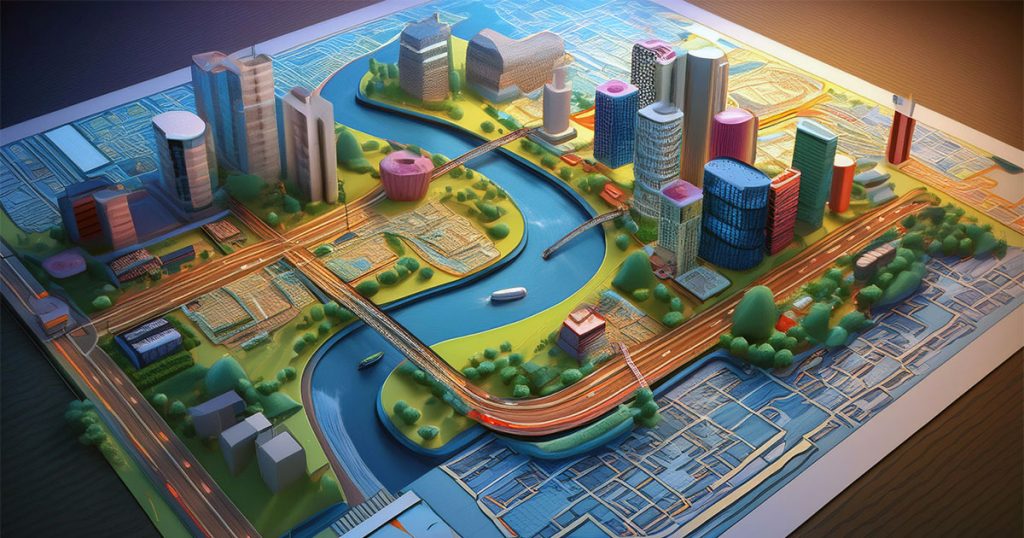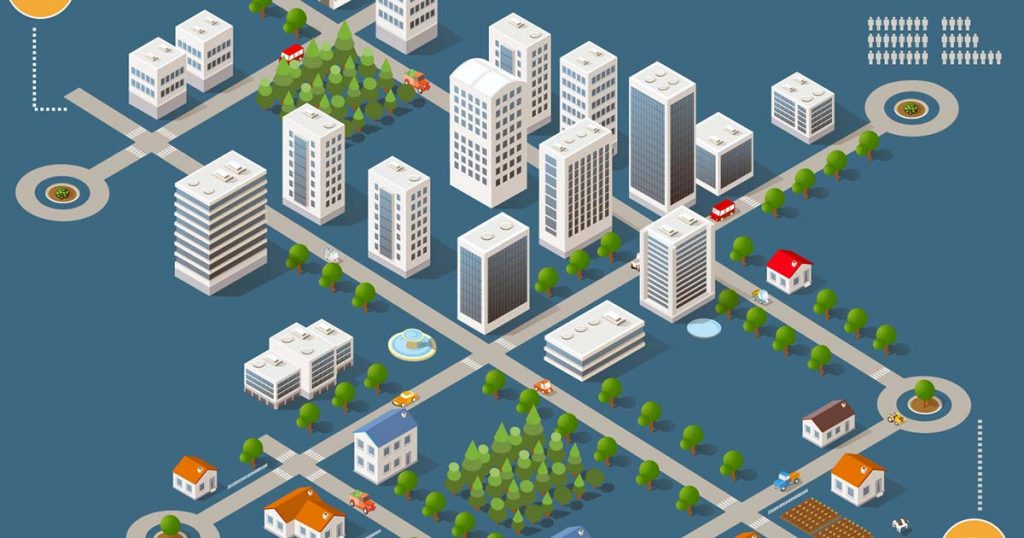Designers combine functionality, aesthetics, and community in public spaces.

An urban designer shapes the form and function of cities, creating environments that blend aesthetic appeal with practicality and sustainability. This work includes designing streets, public spaces, and precincts.
As an urban designer, your role is to balance factors such as the natural environment, historical context, and community needs to create spaces that enhance daily life.
Collaboration is a central activity. You may work closely with professionals like architects and town planners, using problem-solving to turn development plans into enjoyable, sustainable spaces. Urban design demands a blend of creativity, logical thinking, and knowing social and environmental dynamics.
You will also encounter issues beyond design, including local and federal politics, economics, and the environment. Part of the job is to actively participate in site visits, public hearings, and meetings. Ultimately, your designs should reflect the needs and desires of the communities you serve.
Unique Role of Urban Designers
Urban designers blend architecture, environmental design, and city planning. They act as a bridge, connecting the architect's focus on individual buildings with the city planner's role in overseeing policies.
Urban designers create cohesive urban fabrics by shaping interactions between buildings, streets, and communal areas. They focus on the public realm – streets, parks, and plazas nestled between buildings. Their work, crafting the settings where city life takes place, directly shapes the urban experiences of residents and visitors.
An urban designer also serves as a mediator and negotiator, collaborating with professionals, local communities, urban and regional planners, and governmental bodies to tackle complex factors. The ultimate objective is to balance environmental sustainability, economic viability, and social inclusivity, striving to create cities that are functional, sustainable, and enhance quality of life.
Related: How to Build a Career in Sustainability
Difference compared to an architect
Essentially, while architects design individual buildings and landscape architects focus on the design and planning of land areas, an urban designer shapes the spatial layout in between these structures.
Architects concentrate on the form of individual buildings, deeply considering functionality, aesthetics, and the needs of occupants. Their work involves meticulous planning of details, materials, and layouts to ensure the integrity and usability of each structure.
Landscape architects, on the other hand, plan and design land areas such as parks, gardens, and other outdoor spaces. They work on both preserving and enhancing the natural beauty of these spaces while making them functional and accessible to people.
Contrastingly, urban designers focus on creating the broader spatial arrangement of whole neighbourhoods or cities. They consider the layout of buildings, streets, communal areas, and natural features. Their work plays a pivotal role in shaping the very fabric of our cityscapes.
Daily Tasks

As an urban designer, your daily tasks centre on shaping and transforming urban environments. You may create, adjust or assess plans for an area, contemplating the present conditions and future potential.
Key activities
- Develop land use strategies – create plans for residential, commercial, and public spaces that fit future growth and community needs.
- Collaborate with professionals – work with architects, engineers, and planners to combine expertise for urban design projects.
- Engage with the community – gather input from residents and local groups to design spaces that meet their needs.
- Review and assess developer submissions – evaluate site plans to confirm they align with design and regulatory standards.
- Present plans to stakeholders – showcase design proposals to city officials, developers, and community members for feedback and approval.
- Create detailed urban design plans – draft comprehensive layouts that shape the infrastructure, aesthetics, and functionality of public spaces.
- Follow legal and environmental guidelines – comply with local laws and environmental standards throughout the design process.
- Oversee project execution – supervise urban design projects to make sure they meet the design vision.
- Integrate sustainable practices – use eco-friendly materials and energy-efficient designs to promote sustainability.
- Contribute to urban restructuring efforts – help revitalise aging or underused areas, improving functionality and appearance.
Projects range from designing new neighbourhoods to revitalising old ones, or even planning infrastructures like airports or hospitals.
Much of your work will involve collaboration, requiring you to interact with stakeholders such as architects, contractors, local communities, urban planners, and city officials. Regular activities could include attending public hearings, carrying out site visits, or participating in team meetings. With software tools like CAD, you'll translate ideas into detailed technical drawings and 3D visualisations.
The job requires you to explore and address the needs of users. This involves research into political, environmental, social, economic, and spatial aspects, and the capacity to influence planning decisions using effective communication and negotiation skills. Furthermore, you have to ensure plans align with policies and guidelines, and occasionally educate communities about local planning.
What Do I Need to Be an Urban Designer?
To become an urban designer in Australia, start with a bachelor's degree in a related field such as architecture, landscape architecture, or planning. You could also consider a course in urban and regional planning, which would provide you with an understanding of the broader context within which urban design operates.
The next step is usually a postgraduate degree, such as a Master of Urban Design or Master of Urban Planning. These specialised programs delve deeper into urban design principles and methods, enhancing your ability to tackle complex urban challenges. These courses often include hands-on project work, enabling students to apply their learning to real-world scenarios.
Aside from academic qualifications, practical experience is highly valued. This can be gained through internships, work placements, or relevant roles in the built environment sector. Success in urban design calls for a mix of creativity, technical skills, and a strong understanding of social and environmental dynamics.
Related: Urban Design and Town Planning Courses
Examples of Urban Design

Urban design is a multidisciplinary field that shapes the physical layout and functionality of towns and cities. The discipline combines elements of architecture, landscape architecture, and city planning to create environments that are appealing, practical, and sustainable.
A key example is master planning, which is to develop comprehensive plans for large-scale projects or new developments. Designs establish the positioning of buildings, public spaces, and transport systems. This often works hand-in-hand with public space design, a process that enhances urban life by creating spaces such as parks and plazas.
Street design takes into account elements such as pedestrian pathways, bicycle lanes, vehicle traffic flow, and the placement of street furniture and trees to create functional and inviting streets. This work often dovetails with transport-oriented design, where developments are planned around public transport hubs to encourage sustainable commuting and reduce car dependency.
Given Australia's abundant coastal and landscape features, waterfront and landscape design are crucial examples of what urban designers do. The work integrates natural elements into urban landscapes. Sustainable design is also increasingly significant, focusing on environmentally friendly designs that incorporate elements like green spaces, rainwater harvesting, and solar panels.
Urban renewal projects revitalise neglected areas. On a more localised level, neighbourhood design involves planning residential areas, including the arrangement of homes, streets, and parks.
In areas with historical significance, urban designers embark on heritage and conservation projects, ensuring new developments respect and blend with existing heritage.
Related: Urban Design vs Urban Planning: Spaces and Policies